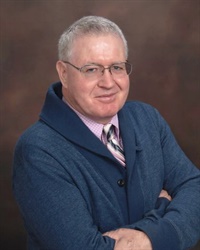


For over 40 years, Jerry Hesch, DPT, MHS, PT, has specialized in treating individuals suffering from acute and chronic pain from hypomobility and dysfunction in joints throughout the body, integrating care within a BPS and Neuro-biomechanical framework. He founded The Hesch Institute for Treatment, Research, and Education in Aurora, CO to treat complex patients and share is evidence-based whole-body approach. A fundamental effort of the Institute is to demystify manual therapy providing simple, effective, user-friendly interventions. This practical approach is one of the safest, most effective methods you will find that dramatically improves cervical spine dysfunction with brief treatment.
Jerry has presented over 100 workshops in the USA, Canada, and Europe, including state, national, and international conferences. He has published books on treating the whole-body and the lumbopelvic complex. In 2020, he published a third book chapter on the upper cervical spine (in Human Movement, Lundgren, Johansson).
Speaker Disclosures:
Financial: Dr. Jerry Hesch is the president of the Hesch Institute. He is a published author and receives royalties. He receives a speaking honorarium from PESI, Inc. Dr. Hesch has no relevant financial relationships with ineligible organizations.
Non-financial: Dr. Jerry Hesch has no relevant non-financial relationships.
Access never expires for this product.
| 5 |
|
| 4 |
|
| 3 |
|
| 2 |
|
| 1 |
|
Satisfaction Guarantee
Your satisfaction is our goal and our guarantee. Concerns should be addressed to: PO Box 1000, Eau Claire, WI 54702-1000 or call 1-800-844-8260.
ADA Needs
We would be happy to accommodate your ADA needs; please call our Customer Service Department for more information at 1-800-844-8260.
PESI Mobile App
Access CE trainings on your phone or tablet through our free mobile app. Choose video or audio-only versions of online courses from the world’s best instructors, and complete your CE requirements anywhere, anytime, at your own pace.
Please wait ...